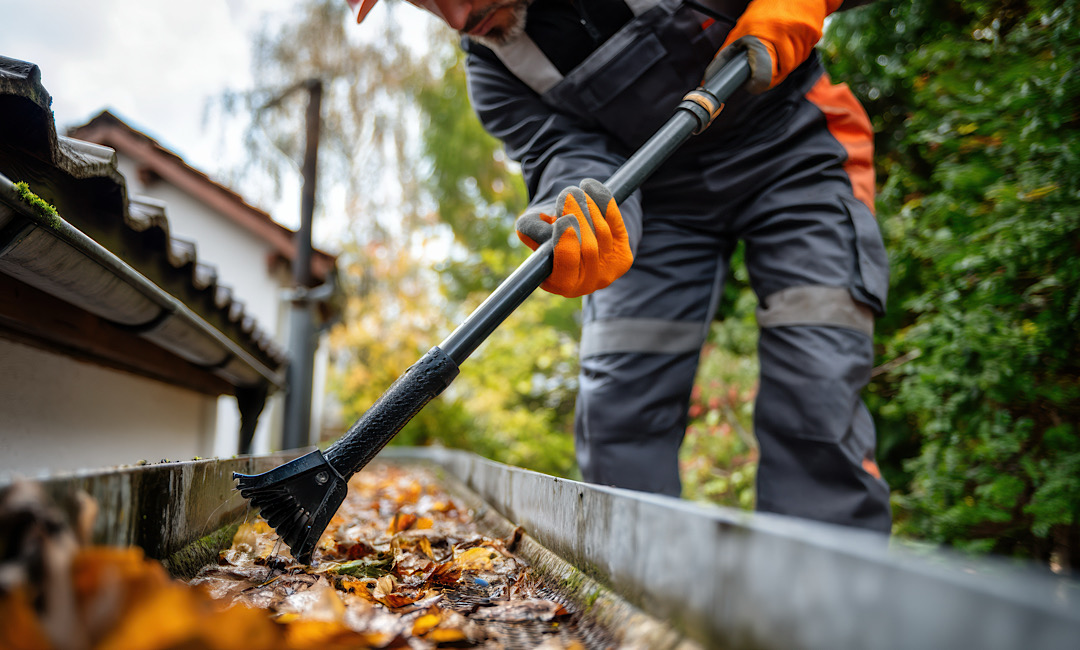Gutters aren’t often top of mind—until they stop working. In South Texas, where weather patterns include sudden downpours and high heat, this overlooked system plays a much more important role than many homeowners realize. A small seam failure or sagging bracket may not seem urgent, but left unaddressed, it can become the starting point for serious structural damage.
This article outlines what can happen when gutter repairs are delayed, the types of damage that often result, and the real-world costs that come with inaction.
Understanding How Gutter Systems Fail
Gutters function as your home’s first defense against water intrusion. Their job is simple but vital: move rainwater safely away from the roof, siding, and foundation. When sections clog, detach, or leak, water escapes the intended flow path—and that’s when problems start.
Early Warning Signs of Gutter Trouble
- Water spilling over the edge during rainstorms
- Visible cracks, rust, or loose connections
- Peeling paint or water streaks on siding
- Pooled water near the foundation after a storm
- Sections of the gutter are pulling away from the roofline
These issues often signal underlying failure—especially when occurring in more than one location.
The Compounding Effects of Delayed Repairs
Addressing gutter damage promptly is rarely expensive. Most basic repairs involve replacing brackets, sealing joints, or adjusting alignment. However, when problems go unnoticed or ignored, they tend to trigger more extensive—and costly—consequences.
Foundation Shifting and Erosion
In Central and South Texas, clay-rich soil expands and contracts rapidly with changes in moisture. When rainwater drains improperly, it saturates the ground near the home, increasing the risk of slab foundation cracks and soil displacement. Repairing foundation damage can easily exceed $10,000.
Fascia and Roof Edge Decay
When gutters overflow or leak, moisture is trapped against the fascia board and the lower edge of the roof. This creates conditions for rot, mold, and eventual structural weakening. Replacing even a section of fascia often requires carpentry and partial roof removal.
Water Intrusion Into Walls and Ceilings
One of the costliest outcomes of gutter failure is water entering wall cavities. This may go unnoticed until visible damage appears—by which time drywall, insulation, and interior finishes may need to be replaced. In humid climates like San Antonio’s, moisture also supports mold growth, which introduces health and remediation concerns.
Landscape Damage and Surface Erosion
Water pouring over clogged or broken gutters often displaces topsoil and damages landscaping. Garden beds may flood, mulch can be washed away, and concrete walkways or patios can crack from soil instability.
Why South Texas Homes Are Particularly at Risk
The climate in South Texas amplifies the consequences of neglected gutter systems:
- Seasonal storms deliver high water volumes in short timeframes
- Intense heat causes gutters to expand and contract, weakening joints
- Mature trees drop leaves, seeds, and twigs that accelerate clogging
- Unpredictable weather makes it easy to miss warning signs
Because of these factors, small issues like a clogged downspout or a leaking seam can escalate faster than expected.
Routine Inspection and Repair: A Practical Approach
Many homeowners assume gutters are “out of sight, out of mind,” but seasonal maintenance and minor fixes are far more affordable than structural repairs. Annual inspections—especially before fall and after major storms—help identify vulnerable areas early.
For systems older than ten years or made from sectional aluminum, replacing them with seamless gutters can also reduce long-term maintenance while improving overall performance.
Frequently Asked Questions
What’s considered a minor gutter repair?
Typical minor repairs include resealing joints, rehanging loose sections, replacing brackets, or clearing blockages. These are usually low-cost, especially when caught early.
Are all gutter systems at equal risk?
No. Sectional systems with multiple joints are more prone to leaks. Older systems or those installed without proper slope or fastening are also more likely to fail.
Can gutter issues lead to indoor water damage?
Yes. If water is misdirected and consistently runs down siding or backs up under shingles, it can eventually enter the home, causing interior staining, mold growth, or electrical hazards.
Is gutter repair typically covered by insurance?
Damage from wear-and-tear or neglect is often excluded from standard homeowners’ policies. However, secondary damage (like water intrusion) may be covered, depending on the situation and carrier.
Making Informed Maintenance Decisions
Gutters do more than keep your roofline tidy. They actively protect your home’s structural integrity, interior comfort, and long-term property value. In a region like South Texas, where environmental conditions add extra stress to exterior systems, staying proactive with gutter maintenance isn’t just smart—it’s necessary.
If you’ve noticed signs of wear or haven’t had your system evaluated in a while, now is a good time to act. To speak with a local expert or request an inspection, contact S&H Seamless Gutters at (210) 857-1979. Early action can prevent expensive repairs—and preserve your home’s value for years to come.


